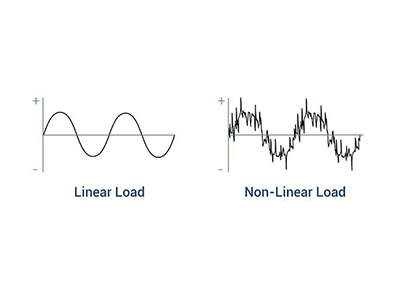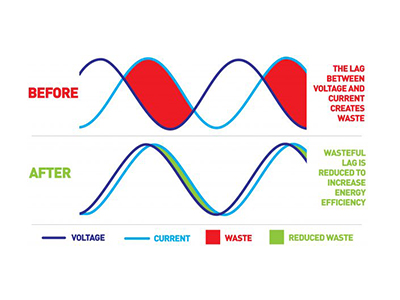Unbalanced Role in Improving Power Quality
Unbalanced Load in Electrical Grid; An Important Factor
One of the essential qualitative parameters of electrical power distribution and transmission networks is the unbalanced load in electrical grid. The amount of unbalanced load in the power network can determine the quality of the network to some extent and also affect the proper functioning of the electronic equipment connected to the network. The unbalanced load, which is caused by the unbalanced voltage, generally occurs only in three-phase systems. Because electrical sources or power plants can increase or decrease output (simultaneously) only in the three-phase grid, this is not possible for the separate phases. In this article, we will get to know the unbalanced load in the power grid, the calculation method, and its solution.
What is the unbalanced load in the electrical grid, and how does it occur?
Many of the electronic equipment used by us are powered by single-phase electricity. Single-phase electricity which is used for household activities has a small capacity, and the equipment does not waste much electricity. Now we must say that only in three-phase systems does voltage unbalance occur when the phase voltages are different or the phase currents are not equal. The unbalanced load in the electrical grid can be due to the combination of these two conditions.
The unbalanced load in the electrical grid is included in the subcategory of network power problems which may occur at any point throughout the distribution system. Power problems include harmonics, flicker, and Undervoltage currents, among others. One of the reasons why the unbalanced load is so important is that it may cause many problems for the electricity distribution and transmission network. Losses in power transmission and distribution systems, as well as the failure of three-phase motors, are only some of the problems that arise due to the occurrence of the unbalanced load in the electrical grid.
The impact of the factor on the system's efficiency - losses in the transmission and distribution systems and losses in three-phase motors - raise additional red flags. The consequences of three-phase electronic equipment's regular functioning or features linked to power and energy measurement are no less concerning.
Why is an unbalanced load in the electrical grid a problem?
As you know, generating electric power from sources in the network is generally balanced. But, one of the reasons for creating an unbalanced load in the power distribution network is that despite the fact that the user's voltage is balanced, the impedance of the network or some of its components becomes unbalanced until it reaches the load location. Consequently, the voltage delivered to the consumer will be unbalanced.
Another reason for the occurrence of unbalanced load in the power grid is that, despite the system impedances being balanced (for example, three physically identical conductors), the consumer's device is unbalanced, and the currents drawn from the phases are unequal.
In the following, we will learn about the problems of unbalanced load in the electrical grid:
- Because of the unbalanced consumption, the voltage difference between the phase that is being extensively utilized and the phases that are not being used might grow excessively high and cause problems. The reliability of the operation of 3-phase machinery is thus compromised. There is also the possibility that single-phase loads may shut down if their voltage drops too much
- Even though there would be three times as much electricity available, the transformer would shut off if everyone just utilized one phase out of the three. This is because the traffic on the transformer would be overwhelmed
- The output of a power plant may only be increased or decreased in three stages as a whole; individual phases cannot be adjusted. This is necessary owing to factors of a technological nature
How to prevent the unbalanced load in the power grid?
To prevent the occurrence of an unbalanced load in the power grid, you must first analyze the grid data using three-phase equipment. The amount of unbalanced load in the network is measured based on the IEC standard. Now, if the measured unbalanced index exceeds the value specified in the standard, it should be reduced. The following methods can be used to improve the unbalanced load in the power grid:
- Separate large single-phase loads: One of the most critical steps in improving the unbalanced load in the network is to determine a separate feeding source for large single-phase loads so that the slightest stress is imposed on the distribution network
- Connect large single-phase loads as close to the point of the incoming supply as possible: increasing the distance of large single-phase loads to the supply - by changing the impedance - causes the voltage drops. By bringing the load closer to the input power, the unbalanced effect will be significantly reduced
- Ensure that all single-phase loads are balanced evenly across all three phases: Evenly distributing single-phase loads can also reduce the unbalanced loads in the power grid. For example, you can connect various equipment to each of the phases according to the amount of their consumption so that the single-phase loads are fed entirely uniformly
How To Calculate the Unbalanced Load in the Power Grid
The highest deviation from the average of the three-phase voltages or currents, given in percent, divided by the average of the three-phase voltages or currents, is the steady-state quantity known as voltage unbalance. Symmetrical components may also be used to measure voltage imbalance. The percent imbalance is expressed as the ratio of the negative sequence (or zero sequences) component to the positive sequence component. Unbalanced loads often cause negative sequence (or zero sequences) currents to flow, which results in negative sequence (or zero sequences) voltages in a power system. The figure below shows these two ratios for a one-week in a residential feeder.
Below you can see the formula used in the Calculation:
To increase the efficiency of the power distribution and transmission network, as well as to reduce energy consumption, it is necessary to monitor the various quality parameters of the network continuously. Unbalanced load in electrical grid is one of these parameters, which is very important in three-phase systems and should be paid special attention to. To monitor various parameters of the power grid, you can use measuring and data recording equipment such as power analyzers.
Share




